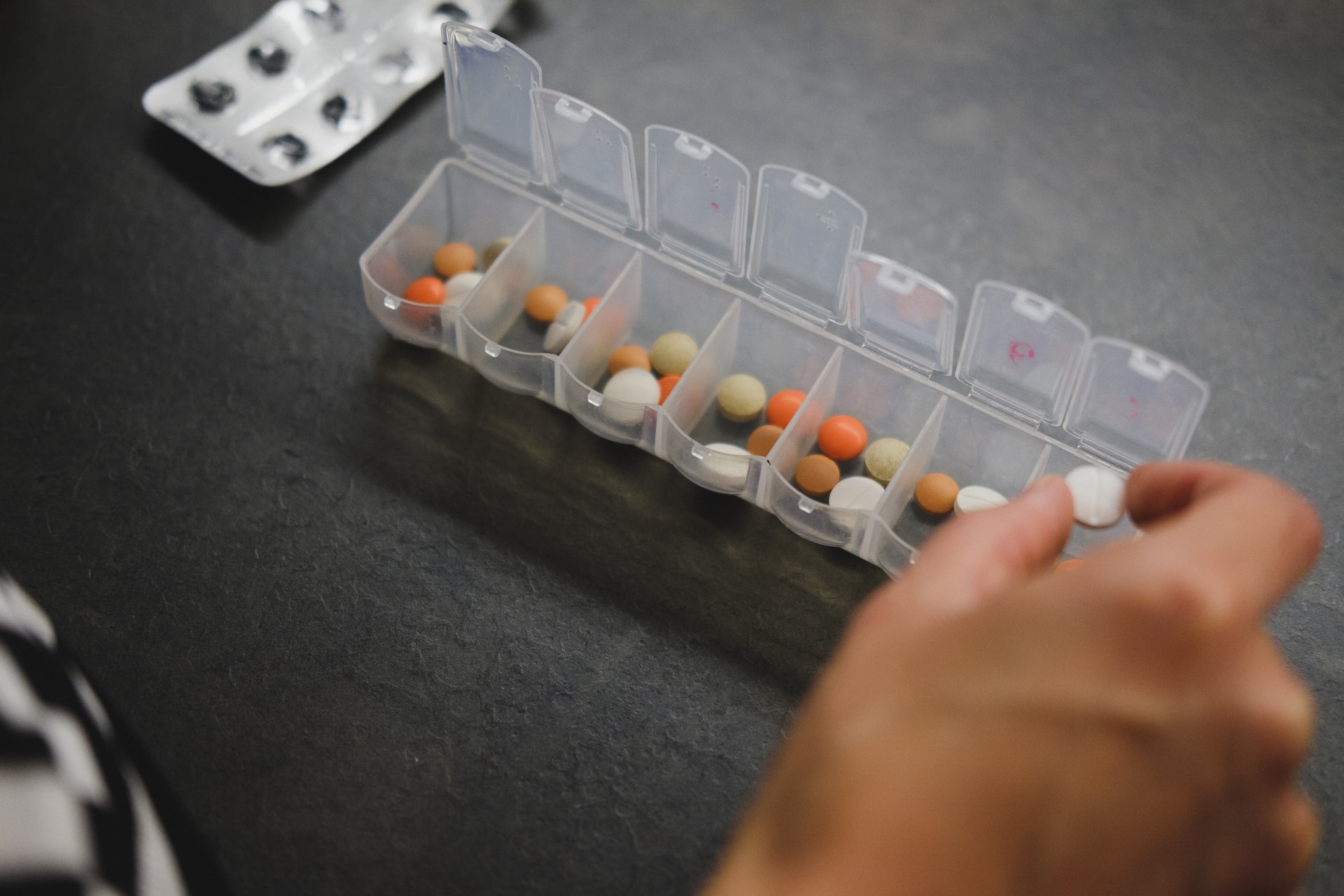
The Real Price of Medications
A survey of variations in prescription drug pricing
People living in the United States have access to some of the best medical care in the world, from life-saving drugs to cutting-edge surgical techniques. But our system is deeply flawed, with spiraling costs forcing many Americans to spend more on care and often receiving poor quality care for all the extra money spent.
Downloads
NCPIRG Education Fund

People living in the United States have access to some of the best medical care in the world, from life-saving drugs to cutting-edge surgical techniques. But our system is deeply flawed, with spiraling costs forcing many Americans to spend more on care and often receiving poor quality care for all the extra money spent.[i] [ii]
Retail prescription drug costs represent about 10% of the total national healthcare expenditure in America and are a public concern because of existing high prices, which often continue to climb.[iii] [iv] In fact, nearly 1 in 4 Americans on medication struggle to afford their prescription drugs – and that rises to more than 4 in 10 for individuals in worse health.[v] Research on these high health care expenses (including prescription drug expenses) in comparison to other countries show that this difficult cost burden is driven primarily by inflated prices: not differences in the drugs used, our aging population, nor the amount of drugs prescribed.”[vi],[vii]
These high prices decimate the delivered value we get from medications. The main problem is this: although a patient may pay more for their life saving medicine, they are not getting any more health value for the extra money spent.
Research shows that high prices lead patients to engage in risky behaviors, including medication rationing or altering dosages without doctor’s consent.[viii],[ix] Nearly 17% of older adults exhibit this non-adherence behavior, the highest among 11 comparably wealthy countries.[x] Physician treatment plans don’t work when patients can’t follow them, and research shows that medical treatment deviations account for major proportions of treatment failures and many hospital and nursing home admissions.[xi]
The picture is even more concerning when you consider that drug prices can vary greatly within cities, states and regions of the United States. Doctors may prescribe more expensive medication that is just as effective as other options, or patients may decide to forgo treatment, when more affordable options could be available at the pharmacy around the corner. Sometimes, the best treatment may be what the patient can consistently stick to, but with providers and patients unsure about prescription drug prices, that treatment decision becomes even more daunting.
We surveyed the cash prices on 12 common drugs in a manner intended to approximate patient experiences – calling more than 250 pharmacies across 33 census-designated areas in 11 states. We found consumers face a dizzying array of pharmacy options as well as significant price differences:
- We found patients could save between $102 – $5,400 a year between minimum and median prices of the selected medications by shopping around.
- Prescription drug prices are disconnected from clear factors; the median price for the surveyed brand and generic drugs varied an average of 892 percent from the cheapest available price.
- Switching from brand name drugs to generic alternatives can help save money. For example, switching from the brand acid reflux medication Nexium to its generic could save a patient an estimated $756 annually.
- Brand name drugs did not adjust to competition from generic drugs, even years after they entered the market. For instance, patients who switch from branded Lipitor to its generic could save an estimated $3,927 annually.
- Large chain pharmacies tend to have higher prices than their small chain or independent counterparts, despite having more leverage in the marketplace. Eight of the 12 drugs in the survey had higher median prices of 8.8 percent to 840 percent at large chains compared to small or independent pharmacies.
These wide variations in prescription drug pricing are a sign of a broken market, further evidenced by price spikes in prescription drug prices.[xii] The consequences can be severe, as Americans are often unable to navigate prescription drug pricing, nor can they afford to say no to life-saving medicines.
Our drug supply system is a complex web of agreements, middlemen, and failures of competition that often leaves patients at the mercy of high prescription drug prices that don’t deliver the health return those prices imply.[xiii] Manufacturers set high list prices and further complicate the picture with a maze of coupons and rebates to supposedly offset those costs. A broken patent system grants exclusive control to drugs for far too long, leading to further abuse. Middlemen, known as Pharmacy Benefit Managers (PBMs), handle drug coverage for most insurers, but sometimes pocket the savings instead of passing them on to patients or the public and private insurers. Moreover, they practice “spread pricing,” adding cost but no value to health care treatments. Wholesalers pay multiple prices without disclosure to the public, while pharmacists set ludicrous retail prices to increase their negotiating leverage with PBMs. In the end, insurers foot the bill for all of these expenses, which then get passed down to vulnerable patients via high premiums, or as our report highlights, through higher direct cash prices.
It is clear that if we don’t make meaningful reforms, patients will continue to see their health care lose value and become harder to access. Fortunately, practical policy solutions will help reduce costs and drive patients and providers to use more high value and affordable drugs that deliver care at lower prices. We can do this through:
● Addressing Monopolization & Lack of Competition
- End patent abuses that delay generic drugs.
- Reform the patent system to ensure it’s driving innovation.
- Allow importation of prescription drugs with FDA approved versions sold in the United States.
- Study the impact of vertical and horizontal mergers across the drug supply chain.
● Comprehensive Transparency:
- Require public disclosure of prescription drug prices at each step of the drug supply chain, including input costs like research and advertising and patient assistance programs; and reimbursements provided to the government, insurers, pharmacies and patients. This information could serve as a foundation from which policy-makers can base further prescription price reforms, and as a way to help patients understand their costs.
- Disclose prices for prescriptions online.
- Enable providers to share clinical efficacy and useable prescription drug pricing for their patients in an integrated database system.
● Price Gouging Protection
- Create state boards of experts to examine prescription drug pricing (based on above transparency) and evaluate what are the best steps to reform the broken market.
- Enact laws that require notification of price increases above inflation, require justification for that increase, and empower the state and federal governments to reject indefensible increases.
- Incorporate value-based pricing and comparative effectiveness into price setting on prescription drugs.
● Fixing Healthcare System Incentives
- Set responsible limits on pharmaceutical companies’ physician-targeted sales tactics
[i] United Health Foundation, America’s Health Rankings: A comparison with OECD nations, downloaded from https://www.americashealthrankings.org/learn/reports/2017-annual-report/…, 30 July 2018.
[ii]Health at a Glance 2017: OECD Indicators. (2017). https://doi.org/10.1787/9789264266414-en
[iii] Centers for Medicaid and Medicare Services. (2017). National Health Expenditures 2017 Highlights. Retrieved from https://www.cms.gov/Research-Statistics-Data-and-Systems/Statistics-Tren…
[iv] AMERICANS’ VIEWS OF HEALTHCARE COSTS, COVERAGE, AND POLICY. (2018). Retrieved from https://www.cms.gov/
[v] Kaiser Health Tracking Poll: August 2015 | The Henry J. Kaiser Family Foundation. (n.d.). Retrieved September 18, 2018, from https://www.kff.org/health-costs/poll-finding/kaiser-health-tracking-pol…
[vi] Dieleman, J. L., Squires, E., Bui, A. L., Campbell, M., Chapin, A., Hamavid, H., … Murray, C. J. L. (2017). Factors Associated With Increases in US Health Care Spending, 1996-2013. JAMA, 318(17), 1668. https://doi.org/10.1001/jama.2017.15927
[vii] Morgan, S. G., Good, C. B., Leopold, C., Kaltenboeck, A., Bach, P. B., & Wagner, A. (2018). An analysis of expenditures on primary care prescription drugs in the United States versus ten comparable countries. Health Policy, 122(9), 1012–1017. https://doi.org/10.1016/J.HEALTHPOL.2018.07.005
[viii] Briesacher, B. A., Gurwitz, J. H., & Soumerai, S. B. (2007). Patients At-Risk for Cost-Related Medication Nonadherence: A Review of the Literature. Journal of General Internal Medicine, 22(6), 864–871. https://doi.org/10.1007/s11606-007-0180-x
[ix] Truven Health Analytics, & National Public Radio. (2017). Health Poll: Prescription Drugs. Retrieved from http://truvenhealth.com/Portals/0/Assets/TRU_18156_0617_NPR_Poll_Prescri…
[x]Morgan, S. G., & Lee, A. (2017). Cost-related non-adherence to prescribed medicines among older adults: a cross-sectional analysis of a survey in 11 developed countries. BMJ Open, 7(1), e014287. https://doi.org/10.1136/bmjopen-2016-014287
[xi] MEDICATION ADHERENCE-IMPROVING HEALTH OUTCOMES A Resource from the American College of Preventive Medicine A Clinical Reference. (2011). Retrieved from https://c.ymcdn.com/sites/acpm.site-ym.com/resource/resmgr/timetools-fil…
[xii] Sudden Price Spikes in Off-Patent Prescription Drugs: Special Committee on Aging United States Senate. (2016). Retrieved from https://www.collins.senate.gov/sites/default/files/Drug Pricing Report Unlocked.pdf
[xiii] National Academies of Sciences, E. and M. (2018). Making Medicines Affordable. (N. R. Augustine, G. Madhavan, & S. J. Nass, Eds.). Washington, D.C.: National Academies Press. https://doi.org/10.17226/24946
Topics
Find Out More


Patient protections needed from medical credit cards

Did your insurance deny your health care claim? How to appeal.

